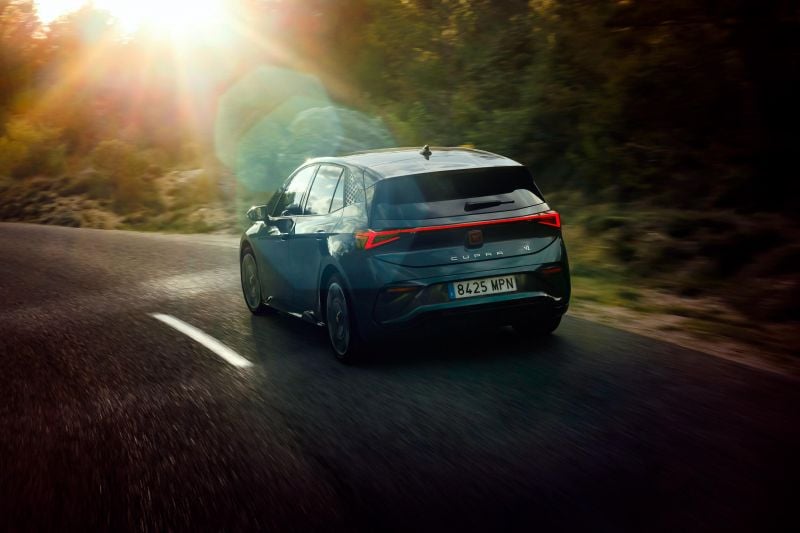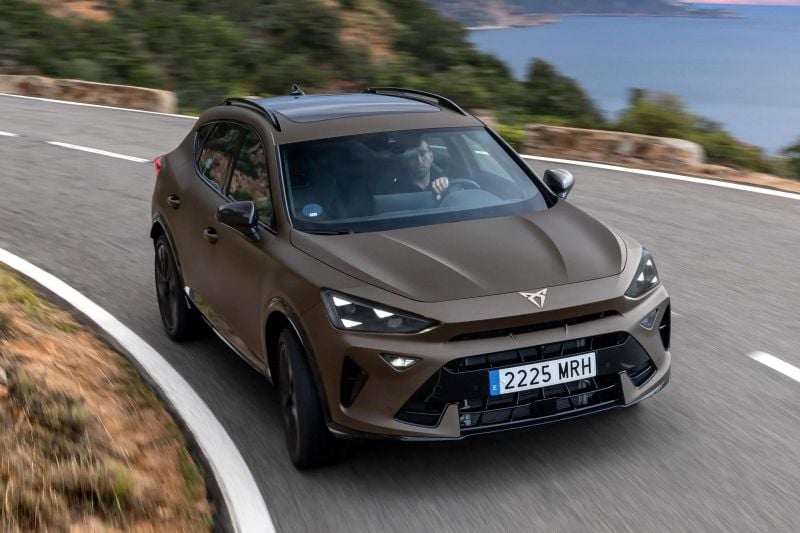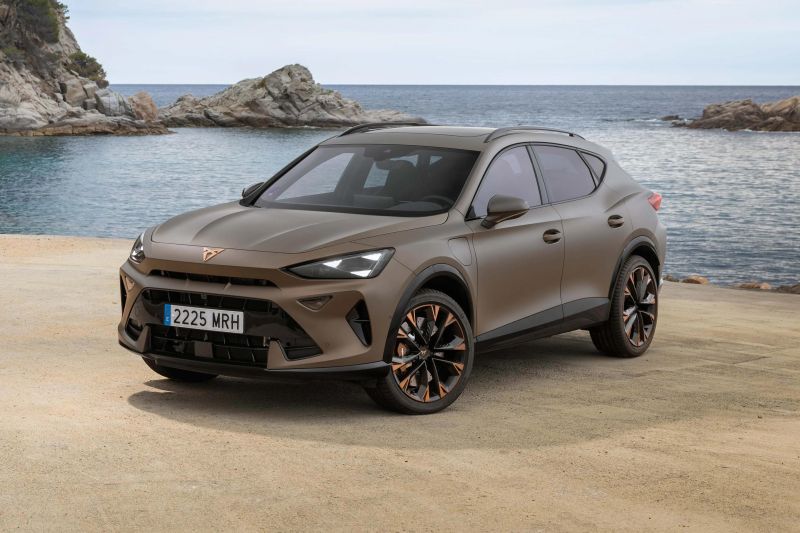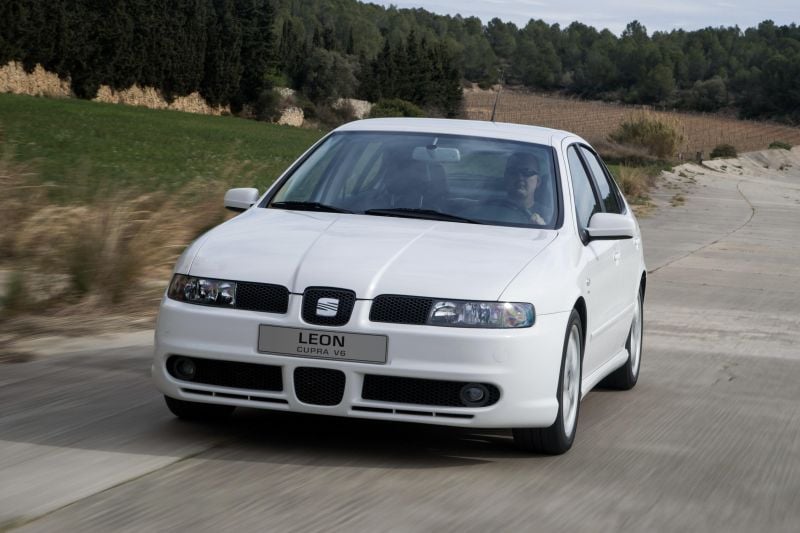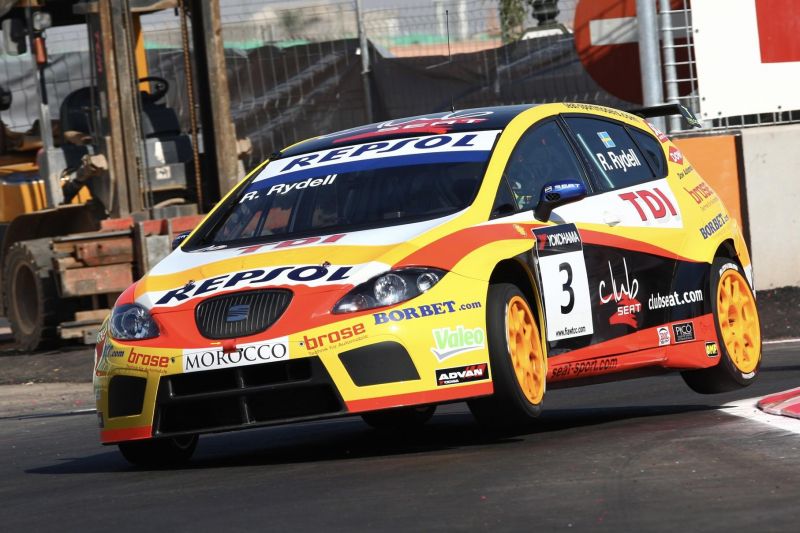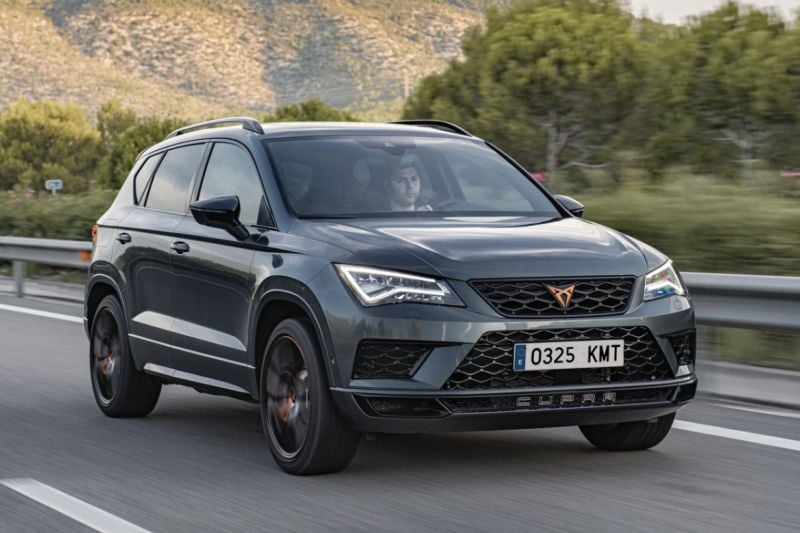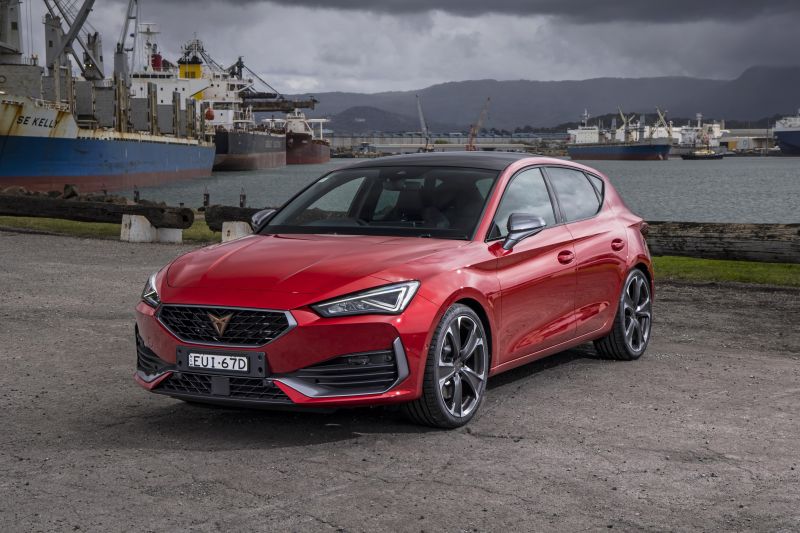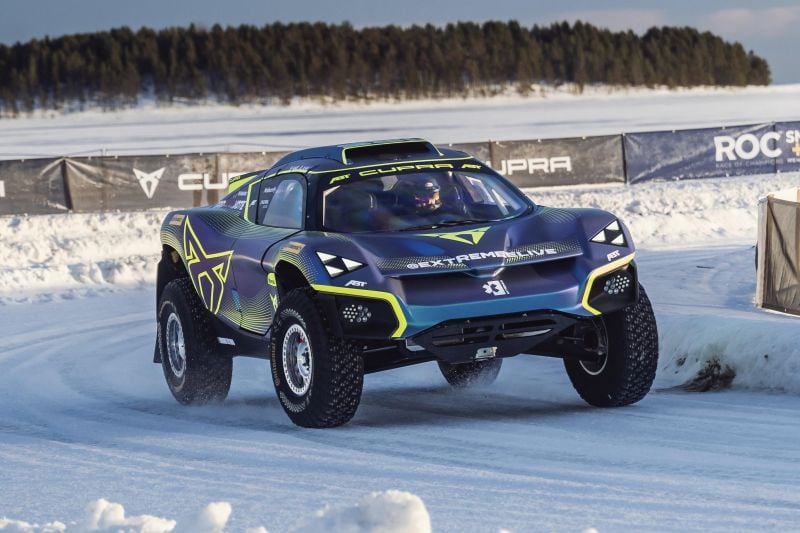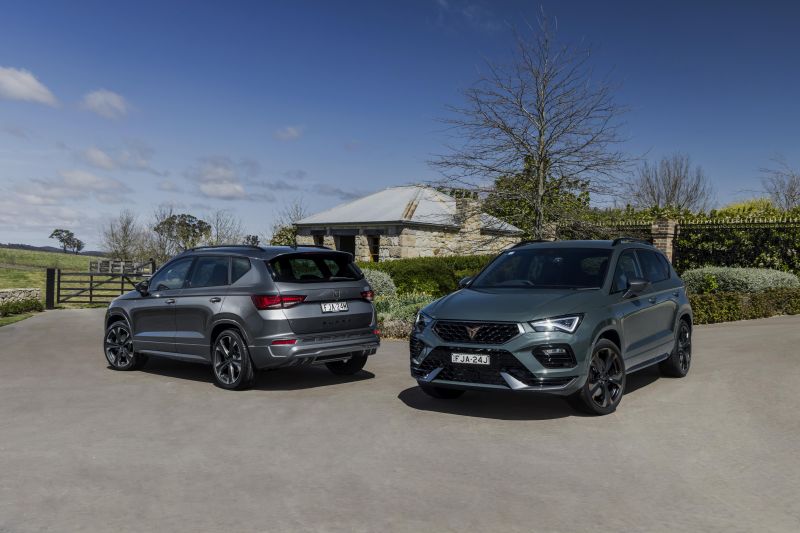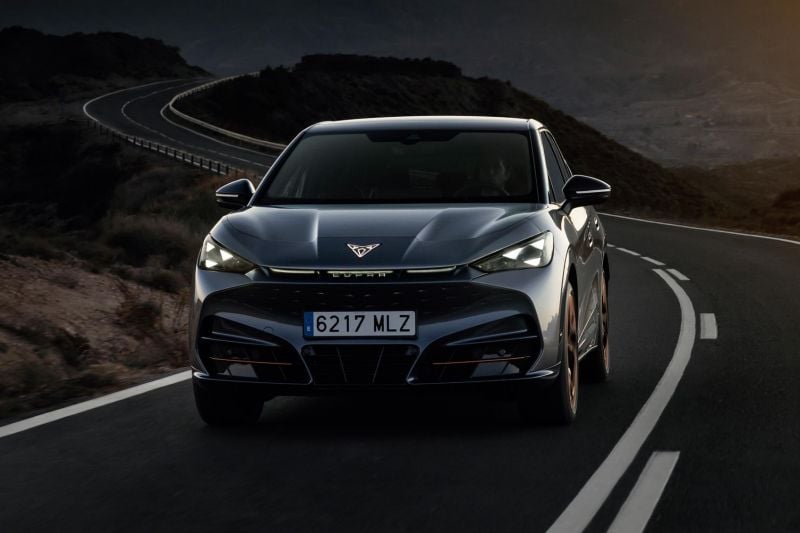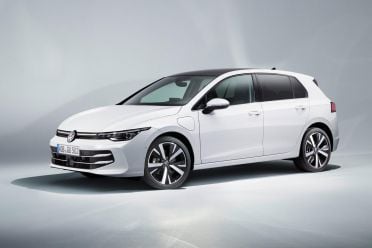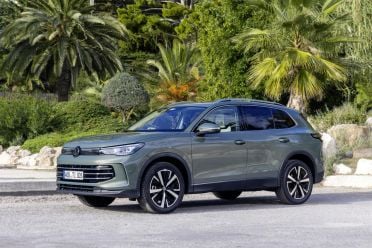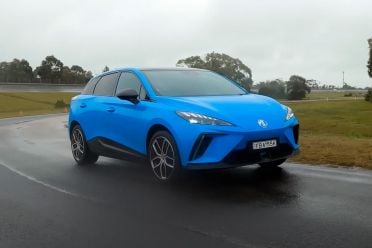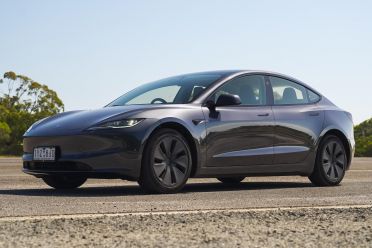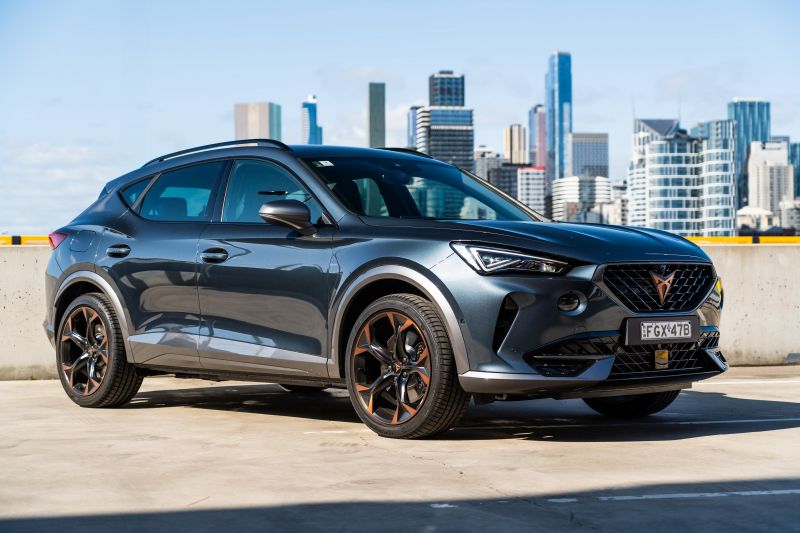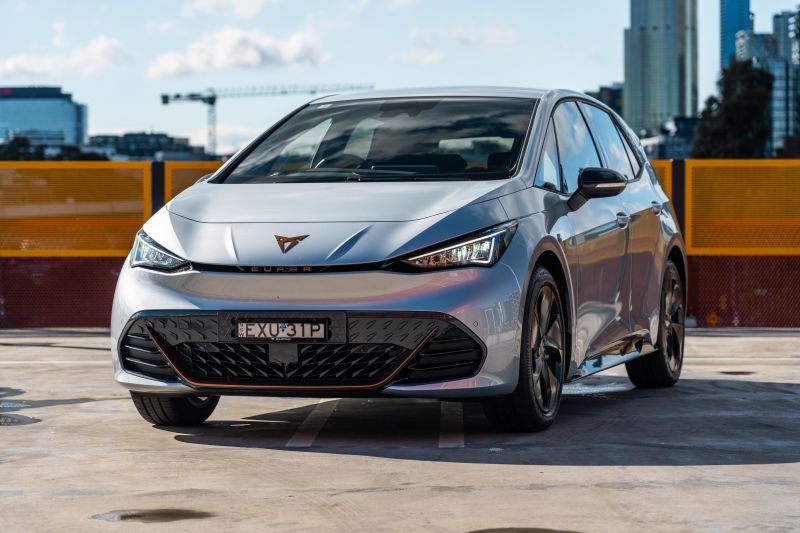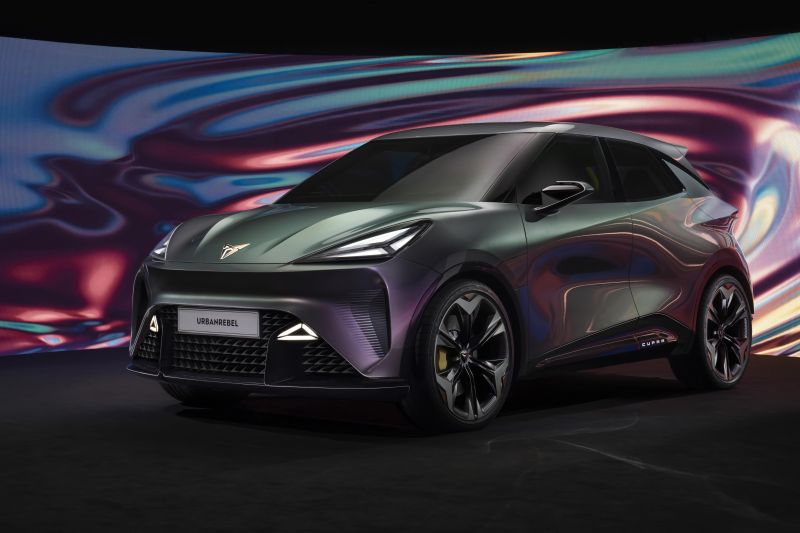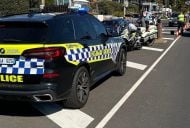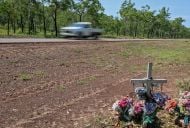Cupra is one of the 10 brands under the Volkswagen Group umbrella, and it remains a niche brand in Australia.
It’s a subsidiary of Spanish manufacturer SEAT based near Barcelona, Spain, and despite its short history as a standalone brand it has proved it can occupy a unique space in the Australian market.
Cupra’s positioning is akin to that of a more budget-friendly Audi alternative.
Originally founded as SEAT’s performance division, Cupra was launched as its own brand in 2018 after many successful years of Cupra Racing overseeing the Spanish brand’s efforts in various motorsport categories including the World Rally Championship and World Touring Car Championship.
Now with its own road cars, Cupra maintains a unique flair in its models that are sold in several different global markets.
Cupra’s vision is to offer every one of its vehicles with a “distinctive personality”, while being powered by its home city’s “vibrant spirit, zest for life and artistic energy”.
It has several unique vehicles that stand out from the rest of the Volkswagen Group available now, with plenty more to follow both overseas and in Australia.
If you’re interested in learning what Cupra is all about, here’s everything you need to know.
Interested in a Cupra? CarExpert’s specialists can help get you in touch with a dealer.
MORE: Everything Cupra
What is Cupra?
Cupra is a subsidiary of Spanish manufacturer SEAT, and was launched as a standalone brand in 2018. It’s currently headquartered in Martorell near Barcelona, Spain, and like SEAT remains under the Volkswagen Group umbrella.
Though SEAT has existed in its modern form since 1950, it wasn’t until 1996 that the Cupra name first appeared. It originated from SEAT Sport, the Spanish brand’s high-performance motorsport subsidiary founded in 1985.
The Cupra name is said to be short for “Cup Racing”, and it was first used in 1996 by the SEAT Ibiza GTI 2.0 16V Cupra Sport. That car was a street-legal version of the Ibiza Mk2 kit car used in motorsports competition at the time.
Cupra Racing saw success in the FIA 2-litre World Rally Cup in 1996, 1997, and 1998, taking out wins in all three years with the SEAT Ibiza Kit-Car. The original 1996 Ibiza Cupra was launched in celebration of the brand’s success.
What followed was the SEAT Ibiza Cupra 1.8 20V in 1999, with that initial success and subsequent road cars paving the way for Cupra as an established performance division of SEAT.
Multiple hotted-up models followed, in the early 2000s, as SEAT introduced various hot hatchbacks wearing the Cupra badge. Those included Leon Cupra 1.8 20V in 1999 and the more powerful Ibiza Cupra R in 2000.
In the same year the SEAT Leon Cupra 4 was launched, which was the first all-wheel drive Cupra and the only six-cylinder model from the brand to date.
Since then, the SEAT Leon has continued to be supplemented with a Cupra-badged performance version.
Throughout the remainder of the 2000s, Cupra Racing went on to secure two wins with the SEAT Leon in the FIA World Touring Car Championship (WTCC) in 2008 and 2009, but it wasn’t until 2017 when the possibility of a standalone Cupra brand came to light.
Then-SEAT CEO Luca de Meo suggested a standalone Cupra brand was possible in that year, at which point the only Cupra available was a performance version of the Leon.
In February 2018, SEAT announced Cupra would become its own brand and hosted an event to break the news, in which it showcased prototypes of future Cupra models like the Ateca SUV.
SEAT executives envisioned a rapid increase in Cupra sales over the subsequent years, which would help to achieve sustainable profitability for the Spanish manufacturer.
It was also confirmed Cupra cars would be sold in various SEAT dealerships across Europe, in which they’d be given dedicated floor space.
What followed was a rapid expansion of Cupra’s lineup. Its first standalone model was the Ateca, which launched in October 2018. It was followed by the Cupra Leon in February 2020, which came after the introduction of the SEAT Leon Mk4.
The Formentor was introduced in 2020 after it was previewed as a concept vehicle the year before, which bore the notable record of being the first Cupra product that was not shared with SEAT.
Cupra introduced its first electric car, the Born, in February 2021, which is closely related to the Volkswagen ID.3. It became a Cupra-exclusive model despite being initially showcased as the SEAT el-Born.
The brand’s second electric car would be the Tavascan, which was revealed in production guise in April 2023. It was preceded by a concept car with the same name in 2019, and it’s the first Cupra model to be produced outside Europe.
The Tavascan is built in China by Volkswagen Anhui, a joint venture formed between Volkswagen and JAC Motors in 2017.
Cupra launched in Australia in 2022, one of the first countries globally where it operated exclusively as a performance brand. It brought three models at once – the Leon, Ateca, and Formentor – and followed with the Born shortly after.
Despite SEAT’s much longer and more storied history, it never made a mark in Australia on its own. It sold vehicles here in a brief stint from 1995 to 1999, but it wasn’t until Cupra’s local launch that it held a strong presence Down Under.
Even then, there’s no overt SEAT branding on any Cupra model sold here, and the subsidiary firmly remains a standalone brand in the Australian market.
Since its local launch, Cupra has rolled out plug-in hybrid (PHEV) versions of cars like the Formentor, beating Volkswagen’s namesake brand to doing so in Australia, while it continues to sell the all-electric Born in one variant.
Soon to join the range is the petrol and hybrid Terramar, as well as the Leon Sportstourer wagon and the electric Tavascan.
Cupra Racing’s motorsport endeavours remained strong in the late 1990s and early 2000s, namely in the World Rally Championship before its success began to fade away in 2001.
The brand has also been active in the Extreme E series since 2021, while also fielding a Formula E team in the past two championship seasons – both under the Abt umbrella.
The Abt Cupra Extreme E team announced late last year it wouldn’t return for the 2024 season, instead choosing to focus on Formula E. It’s reportedly open to entering the related hydrogen-based off-road series Extreme H in 2025.
In Formula E, the Abt Cupra team had been using Mahindra powertrains until the end of the 2023-24 season, when its partnership ended. Abt will instead switch to Lola-Yamaha powertrains for the 2024-25 season, with Cupra’s future partnership status unclear.
Cupra now serves various markets worldwide, including Europe, the Middle East, Africa, Latin America, Singapore, and Australia.
The brand also utilises several Volkswagen Group facilities for its manufacturing, as well as SEAT’s own facilities in Spain.
Global production figures have seen a strong increase over the past three years, with 81,839 units produced in 2021, 170,632 in 2022, and 246,749 in 2023.
The growth of Cupra and the lack of investment in SEAT led to rumours the latter brand would be shuttered, though it now appears to be safe until at least 2029.
Here’s a breakdown of where every Cupra model is manufactured:
| Model | Manufacturing location |
|---|---|
| Cupra Born | Zwickau, Germany |
| Cupra Leon | Martorell, Spain |
| Cupra Formentor | Martorell, Spain |
| Cupra Ateca | Kvasiny, Czech Republic |
| Cupra Terramar | Györ, Hungary |
| Cupra Tavascan | Anhui, China |
Interested in a Cupra? CarExpert’s specialists can help get you in touch with a dealer.
MORE: Everything Cupra
What can you currently buy from Cupra?
Cupra currently has four cars on sale in Australia, with a handful on the way in the near future.
Cupra’s Australian lineup is as follows:
| Model | Segment | Price range | Sales (Jan-Sep 2024) |
|---|---|---|---|
| Cupra Born | Small | $59,990 | 334 |
| Cupra Leon | Small | $49,190 – $65,690 D/A | 259 |
| Cupra Formentor | Medium SUV | $51,990 – $65,790 | 823 |
| Cupra Ateca | Medium SUV | $49,888 – $68,990 D/A | 196 |
Prices are before on-road costs unless specified as drive-away (D/A).
The Born is currently Cupra’s only electric vehicle (EV) in Australia. It’s sold here in one variant, which offers 170kW of power and 310Nm of torque.
It’s fed by a 77kWh battery pack with a claimed electric range of up to 511km.
Cupra’s only other hatchback here is the Leon, sold in four permanent variants – including the plug-in hybrid VZe and the performance-oriented VZx.
Power figures range from 140kW to 221kW across the lineup, while torque outputs range from 320Nm to 400Nm. Fuel economy figures are generally in the 6.0L/100km range, though the VZe is claimed to consume as little as 1.8L/100km.
You’ll notice Cupra’s petrol and hybrid models in Australia use similar variant names. For such models, V typically refers to the base-spec variant, VZ to slightly sportier models, VZe to PHEVs, and VZx to full-fat performance cars.
Then there are the two SUVs available. The smaller of the pair is the Formentor crossover which, like the Leon, is available in four variants including the VZe PHEV and VZx.
Mechanical specifications are very similar to the Leon too, with power ranging from 140kW to 228kW and torque from 320Nm to 400Nm.
The Ateca SUV, meanwhile, is sold here in two V and VZx variants. Power ranges from 140kW to 221kW, and torque from 320Nm to 400Nm.
Each non-electric model uses some variation of a turbocharged four-cylinder engine, typically 2.0-litre for pure petrol cars and 1.4-litre for PHEVs.
All non-electric models are automatic-only and utilise dual-clutch transmissions, and it’s worth noting many of these models have more extensive lineups overseas.
Coming soon are the Tavascan, Terramar, and Leon Sportstourer wagon. The Tavascan is due to arrive in two variants before the end of 2024, while the Terramar is slated for a 2025 arrival with petrol and PHEV powertrains.
The Leon Sportstourer – the wagon version of the Leon hatch and effective replacement for the Volkswagen Golf R wagon – is expected to arrive in mid-2025.
Many of these cars are closely related to other Volkswagen Group products. The Leon shares a platform with the Golf, while the Terramar is a cousin to the Tiguan and the Born has much in common with the ID.3.
Interested in a Cupra? CarExpert’s specialists can help get you in touch with a dealer.
MORE: Everything Cupra
Which brands are Cupra competing against?
As a Volkswagen Group brand, Cupra is primarily competing against Volkswagen, Skoda, and to some degree Audi in Australia.
Volkswagen offers direct rivals to the Leon and Terramar in the form of its Golf and Tiguan respectively, due to the shared platforms within the overarching group. Similarly, the Born is closely related to the Volkswagen ID.3.
The Ateca also occupies the same segment as the Skoda Karoq, while Audi’s A3 can also be matched against the Leon.
Other Cupra cars like the Born and Formentor occupy their own unique spaces. To find rivals, it’s worth looking to other manufacturers.
Generally speaking, few other brands have as overtly sporty an image as Cupra, though the Spanish brand can also be considered a cheaper Audi alternative.
The Formentor in particular is a unique case, given it’s a smaller SUV that offers a PHEV powertrain while maintaining sporty dynamics.
The Born can also be compared to a higher-spec MG 4, and is a hatchback alternative to the Tesla Model 3 and BYD Seal.
Though it’s not here yet, the Tavascan EV could be a sporty alternative to the Tesla Model Y, as well as cheaper options against the BMW iX2 and Audi Q4 e-tron Sportback.
Interested in a Cupra? CarExpert’s specialists can help get you in touch with a dealer.
MORE: Everything Cupra
How popular is Cupra in Australia?
Cupra remains a niche brand in Australia. From January to the end of September this year, the Spanish marque has shifted 1612 units.
The Formentor continues to be its best-selling model by some margin, with the Born, Leon, and Ateca sitting further back and selling in similar volumes to each other.
Against other Volkswagen Group brands, it’s comfortably among the lower-volume options. Volkswagen itself has sold 27,268 units this year, while Audi has recorded 11,156 sales in the same time.
The closest-matched stablemate to Cupra is Skoda, as the Czech brand has recorded 4043 sales over the nine-month period.
Even Porsche has outsold Cupra in the first nine months of 2024, with 5204 sales recorded so far this year.
Those figures won’t be alarming to Cupra though, as the brand has outlined it isn’t chasing mass-market appeal in Australia.
Despite the arrival of a new base-spec Ateca this month, it isn’t an indication that the brand is pushing to become more mainstream, according to Cupra Australia head of product and marketing Jeff Shafer.
“I don’t think we’re ever going to be the cheapest offering chasing the volume that some brands are,” Mr Shafer told CarExpert earlier this month.
“Some people have a more functional approach to cars, and that’s fine. We’ve got other brands that will serve that, but Cupra is for people who want to stand out. They want to be a little bit of a rebel, they want to make sure that they’re enjoying their their motoring life, and they enjoy driving.”
Interested in a Cupra? CarExpert’s specialists can help get you in touch with a dealer.
MORE: Everything Cupra
What’s next for Cupra?
Cupra is gearing up for a busy 2025, set to be headlined by a mix of facelifts and new cars.
Before all that is the Tavascan, which is set to arrive in Australia before the end of this year.
It’s the only Cupra model to be built outside of Europe – China, specifically – and its expected date of arrival has been brought forward by a couple of months.
Coming in the first half of 2025 will be the new Terramar SUV, which will arrive with PHEV and petrol power. It’ll be joined by the facelifted Born range, which will also gain a sportier VZ variant.
In the second quarter of 2025 the Formentor facelift will touch down, followed by updated PHEV models mid-year.
Similarly, the facelifted Leon will arrive in Australia in the second quarter of 2025. It’ll bring with it updated PHEV models mid-year, while the new Leon Sportstourer will join the range at the same time.
Cupra’s newest model is still a while away from arriving in Australia, and it’s taking the form of an entry-level EV city car.
Originally revealed as the UrbanRebel concept, the Raval is due to begin production in 2025, while an Australian launch is expected sometime in 2026.
It’ll be built in a new factory in Martorell, Spain, alongside similarly sized vehicles for the Skoda and Volkswagen brands on a dedicated EV platform.
Interested in a Cupra? CarExpert’s specialists can help get you in touch with a dealer.
MORE: Everything Cupra





